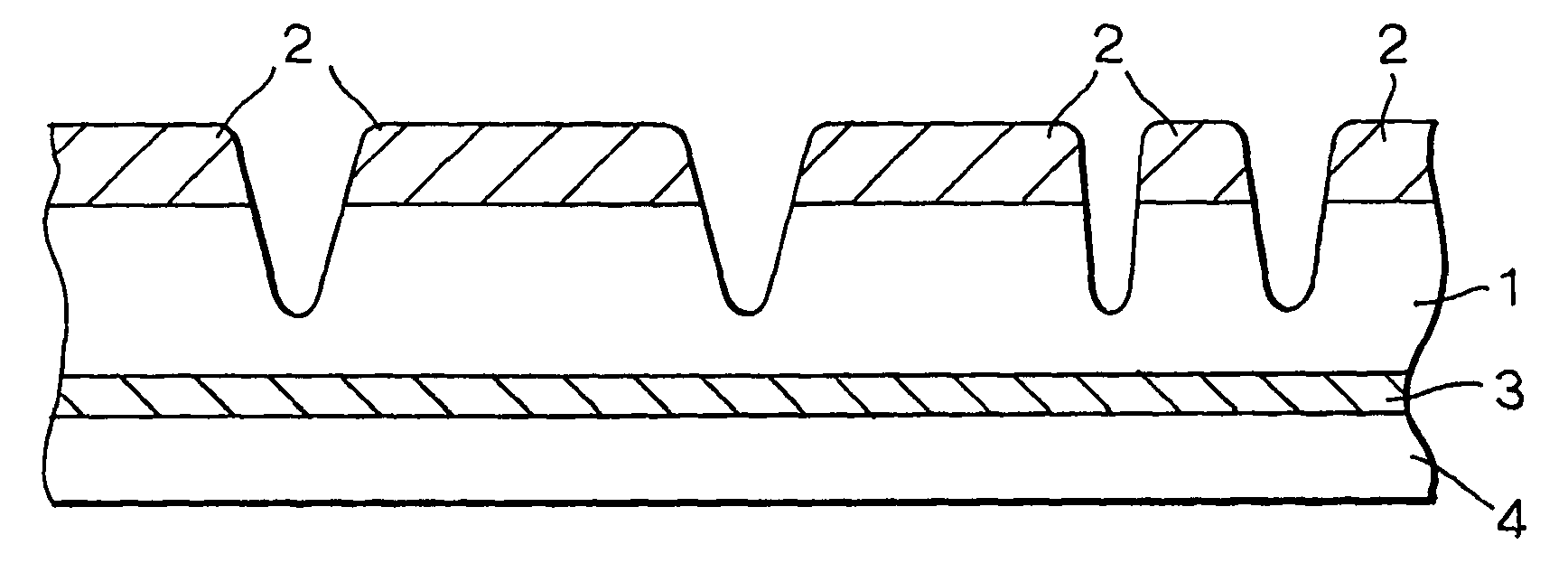Flexographic printing formes
a printing form and flexographic technology, applied in the field of flexographic printing forms, can solve the problems of high dot gain over the full tonal range, difficult control, and inability to apply printing inks from inking rollers in varying thicknesses to different parts of the printing surfa
- Summary
- Abstract
- Description
- Claims
- Application Information
AI Technical Summary
Problems solved by technology
Method used
Image
Examples
Embodiment Construction
[0029] FIG. 1 shows an elastomeric forme comprising an elastomeric body 1 covered by a surface layer 2. The elastomeric body 1 has the ability to deform under stress and return to its original size and shape upon release of the stress. The elastomeric body 1 is formed on a stabilising layer 3 of Mylar (RTM) polyethylene teraphtlate and supported by a backing of metal such as aluminium or glass fibre reinforced plastics material. The forme may be flat or cylindrical.
[0030] FIG. 2 shows the elastomeric forme of FIG. 1 which has been ablated in accordance with a particular printing pattern. The main body 1 of the forme is formed from an ink repelling material such as silicone rubber. The surface layer 2 is formed of an ink accepting material. The layer 2 may be formed by a different material or the silicone rubber may be treated, for example by a plasma treatment such as described in U.S. Pat. No. 6,299,596, U.S. Pat. No. 6,200,626 or WO 0121691 to its properties so that it is ink acce...
PUM
 Login to View More
Login to View More Abstract
Description
Claims
Application Information
 Login to View More
Login to View More - R&D
- Intellectual Property
- Life Sciences
- Materials
- Tech Scout
- Unparalleled Data Quality
- Higher Quality Content
- 60% Fewer Hallucinations
Browse by: Latest US Patents, China's latest patents, Technical Efficacy Thesaurus, Application Domain, Technology Topic, Popular Technical Reports.
© 2025 PatSnap. All rights reserved.Legal|Privacy policy|Modern Slavery Act Transparency Statement|Sitemap|About US| Contact US: help@patsnap.com



